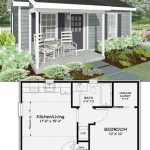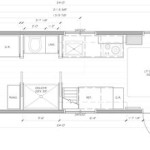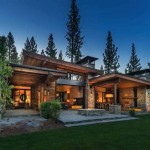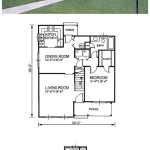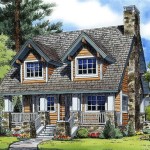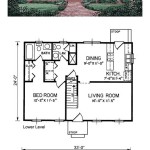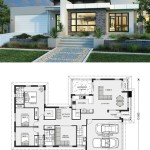Pool House Plans Integrating Barriers and Facilities in Japanese Building Design
Integrating a pool house into a Japanese building design requires a careful balance of aesthetics, functionality, and safety. This article explores the key considerations in designing pool house plans that incorporate barriers and facilities while respecting the principles of Japanese architecture. The discussion will delve into specific design elements, material choices, and safety features necessary for a successful integration.
Japanese architecture traditionally emphasizes harmony with nature, clean lines, and the use of natural materials. When incorporating a modern element like a pool house, it is essential to maintain these core principles. The placement of the pool house, its orientation, and its connection to the main building and surrounding landscape are crucial factors to consider. The overall design should aim for a seamless integration that enhances the property's aesthetic appeal while providing a functional and safe recreational space.
Designing with Barriers: Safety and Aesthetics
Barriers are a critical component of any pool house plan, particularly in areas with children or pets. The purpose of a pool barrier is to prevent unsupervised access to the pool area, minimizing the risk of accidental drowning. In the context of Japanese architecture, the design of these barriers should be thoughtfully considered to ensure they blend aesthetically with the surrounding environment.
Traditional Japanese gardens often feature elements like bamboo fences or screens (sudare) to create privacy and define spaces. These elements can be adapted to serve as pool barriers, providing a visually appealing and effective safety solution. Bamboo fences, for instance, offer a natural and textured appearance that complements the Japanese aesthetic. However, these fences must meet safety standards, ensuring they are high enough and constructed in a way that prevents climbing.
Glass panels are another option for creating pool barriers that offer unobstructed views of the surrounding landscape. Frameless glass panels provide a minimalist and modern look that can complement the clean lines of Japanese architecture. The transparency of the glass allows for visual connection between the pool area and the garden, maintaining a sense of openness and integration with nature. It's crucial to choose tempered or laminated glass that meets safety standards for pool barriers.
Self-closing and self-latching gates are essential components of any pool barrier system. These gates should be designed to automatically close and latch after each use, preventing accidental access to the pool area. The hardware used for these gates should be durable, weather-resistant, and designed to blend seamlessly with the overall aesthetic of the pool house. Consider using materials like stainless steel or powder-coated aluminum for a modern and minimalist look.
The design of the pool deck itself can also contribute to safety. Using non-slip materials for the decking around the pool minimizes the risk of slips and falls. Materials like textured concrete, natural stone, or composite decking that resembles wood can be used to create a safe and aesthetically pleasing pool deck. The deck should also be designed with proper drainage to prevent water from pooling, further reducing the risk of accidents.
Essential Facilities: Functionality and Comfort
Beyond safety barriers, a well-designed pool house should include essential facilities that enhance the functionality and comfort of the space. These facilities may include changing rooms, showers, restrooms, and storage areas. The design of these facilities should align with the principles of Japanese architecture, prioritizing simplicity, functionality, and the use of natural materials.
Changing rooms should be designed to provide privacy and comfort for pool users. Incorporating elements like shoji screens or sliding doors can create a sense of privacy while maintaining the Japanese aesthetic. These rooms should be adequately ventilated and include ample storage for towels, swimwear, and other personal items. Consider using natural materials like wood or bamboo for the interior finishes to create a warm and inviting atmosphere.
Showers and restrooms are essential for maintaining hygiene and comfort around the pool area. Outdoor showers can be designed to blend seamlessly with the surrounding landscape, using natural stone or wood as building materials. Restrooms should be equipped with water-efficient fixtures and designed to be easily cleaned and maintained. Consider incorporating Japanese design elements like a traditional washbasin (tsukubai) or a hinoki wood soaking tub for a luxurious touch.
Storage areas are crucial for keeping the pool area organized and clutter-free. These areas can be used to store pool equipment, toys, and furniture. Built-in storage solutions, such as cabinets and shelving, can be integrated into the design of the pool house to maximize space and maintain a clean aesthetic. Consider using materials that are weather-resistant and easy to clean, such as teak wood or composite materials.
A seating area or lounge space is also an important consideration for a pool house. This area can be used for relaxing and socializing after swimming. Comfortable seating options, such as lounge chairs, sofas, and daybeds, should be arranged to maximize comfort and offer views of the pool and surrounding landscape. Consider incorporating a covered patio or pergola to provide shade and protection from the elements.
Integrating Japanese Design Principles
Successfully integrating a pool house into a Japanese building design requires a deep understanding of Japanese architectural principles. These principles include an emphasis on harmony with nature, simplicity, and the use of natural materials. By incorporating these principles into the design of the pool house, it is possible to create a space that is both functional and aesthetically pleasing.
The use of natural materials is a key element of Japanese architecture. Wood, bamboo, stone, and paper are commonly used materials that create a sense of warmth and connection to nature. When designing a pool house, consider using these materials for the structure, cladding, and interior finishes. For example, cedar wood can be used for the siding, bamboo can be used for the fencing, and natural stone can be used for the decking.
Simplicity and minimalism are also important principles to consider. The design of the pool house should be clean and uncluttered, with a focus on functionality. Avoid unnecessary ornamentation and prioritize clean lines and simple forms. The color palette should be neutral and earthy, reflecting the colors of the natural landscape. Consider using shades of brown, green, and gray to create a calming and harmonious atmosphere.
The connection to nature is a fundamental aspect of Japanese architecture. The design of the pool house should aim to blur the lines between the interior and exterior spaces. Large windows and sliding doors can be used to create a seamless connection between the pool area and the surrounding garden. Consider incorporating elements like a koi pond, a rock garden, or a bamboo grove to enhance the connection to nature.
Proper ventilation is also essential for a pool house, especially in areas with high humidity. Natural ventilation can be achieved through the use of operable windows and doors, allowing for cross-ventilation and reducing the need for artificial cooling. Consider incorporating traditional Japanese ventilation techniques, such as the use of transoms or clerestory windows, to maximize airflow and create a comfortable environment.
Lighting is another crucial aspect of Japanese design. Soft, ambient lighting is preferred over harsh, direct lighting. Consider using paper lanterns or recessed lighting to create a warm and inviting atmosphere. Natural light should be maximized during the day, while artificial lighting should be used sparingly at night. Consider incorporating a moon-viewing platform (tsukimidai) or a Japanese garden lantern (tōrō) to enhance the ambiance of the pool house.
By carefully considering these design elements and incorporating them into the pool house plan, it is possible to create a space that is both functional and aesthetically pleasing, while also respecting the principles of Japanese architecture. The result will be a pool house that seamlessly integrates with the surrounding landscape and enhances the overall beauty and tranquility of the property.

Japandi Pool Ideas Blend Serenity Style Mojo Boutique

House Tour This Japanese Zen Bungalow Is Built Out Of The Box Peak Singapore

Step Inside This Japanese Inspired Home Extension That S Wrapped Around A Reflection Pool

12 Contemporary Swimming Pool Designs To Aspire For

Villa Abba Resorts Izu

House Tour This Japanese Zen Bungalow Is Built Out Of The Box Peak Singapore

Azabudai Hills Facility Overview Major Project Mori Building Co Ltd

Classic River View Japanese Style Room Luxury Onsen Ryokan In Nagato Japan

Pool House Design Ideas

Villa Abba Resorts Izu
Related Posts

